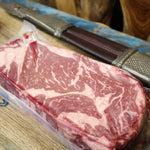
Chapter 4: From Renaissance Kitchens to Global Plates
Embarking on the next chapter, we unravel the culinary journey of beef from the Renaissance era to the modern age. This exploration, rich in details and historical snapshots, paints a vivid picture of how beef transformed from a Renaissance delicacy to a global culinary staple.
Renaissance Revival (16th century)
In the 16th century, the culinary landscape experienced a revival. Beef stepped out of the grand banquets and into the everyday meals of common folk. Cookbooks, like Bartolomeo Scappi's "Opera," showcased the versatility of beef in Renaissance kitchens. This wasn't just about food; it was a time when beef became a canvas for culinary expression in the broader cultural awakening of the Renaissance.
Baroque, Enlightenment, and the Beef Evolution (17th-18th centuries)
As Europe transitioned through the Baroque to the Enlightenment, beef continued to hold its own. It adapted to the changing tastes of aristocracy and the growing middle class. The Enlightenment's focus on reason and knowledge influenced not only philosophy but also culinary innovation. Beef became a symbol of enlightenment and progress.
Industrial Revolution and the Rise of Accessibility (18th-19th centuries)
The Industrial Revolution, a time of immense change, also impacted the way we consumed beef. Innovations in transportation and refrigeration made beef more accessible. It went from being a luxury of the aristocracy to a staple in the diets of industrialized societies. The rise of modern restaurants, especially in Paris, popularized beef dishes among the urban middle class.
20th Century: Beef Goes Global (20th century)
The 20th century solidified beef as a global culinary staple. Advances in food processing, transportation, and refrigeration gave rise to the modern meat industry. Fast-food chains introduced iconic beef-based dishes that became synonymous with global cuisine. Steakhouse culture thrived, and new cuts and cooking methods further entrenched beef as a symbol of prosperity and indulgence.
21st Century: Adapting to Changing Palates (21st century)
In the 21st century, the culinary landscape is in flux. Traditional beef dishes persist, but there's a growing awareness of sustainability and ethical considerations. Plant-based alternatives and a renewed interest in traditional and artisanal beef production offer diverse choices for today's consumers. The sizzle of beef continues to echo through history, reminding us of its enduring significance and adaptability in the ever-evolving tapestry of human gastronomy.
In summary, from Renaissance kitchens to the global plates of the 21st century, the journey of beef consumption is a story of adaptation, innovation, and changing palates—a tale that reflects not just culinary evolution but also the intricate relationship between humanity and its gastronomic heritage.



